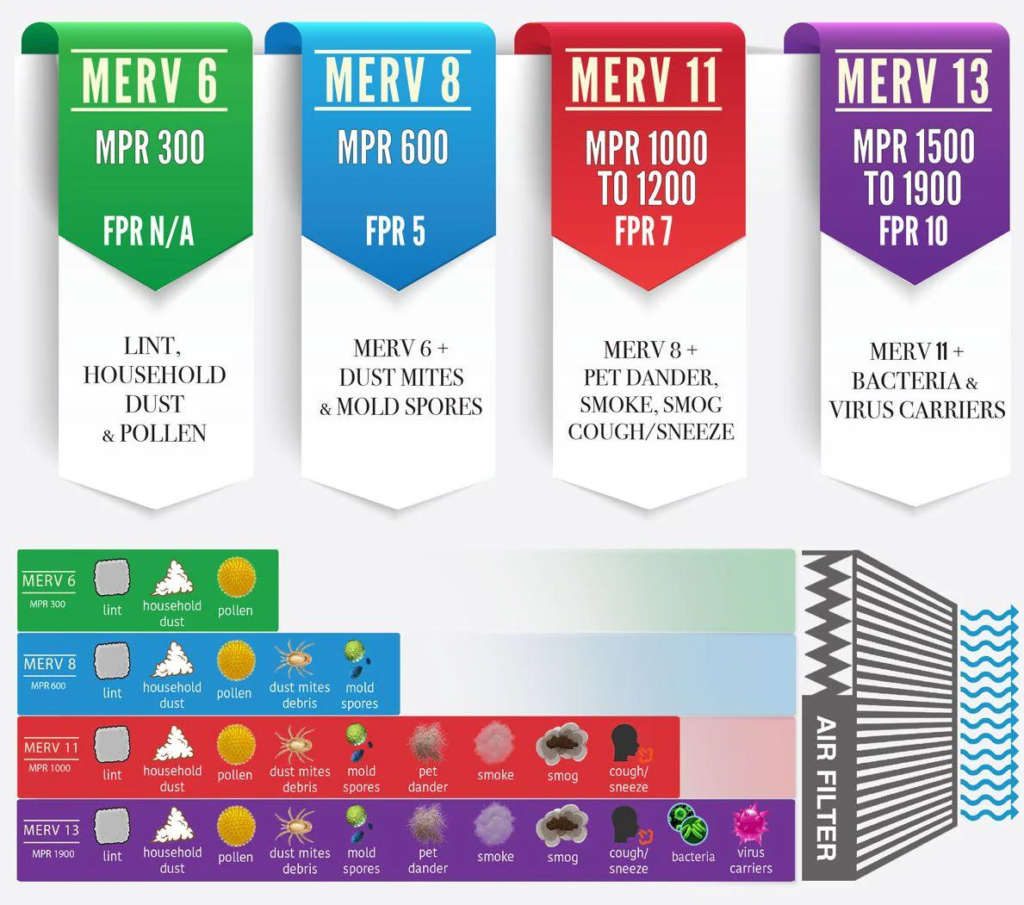When it comes to improving indoor air quality, your HVAC system’s air filter plays a starring role. But with so many options available, choosing the right one can feel overwhelming. Two popular choices—MERV 8 and MERV 11—often leave homeowners scratching their heads. Which one strikes the perfect balance between filtration efficiency, airflow, and cost? Let’s break down the differences to help you decide.

What is a MERV Rating?
First, a quick primer: MERV (Minimum Efficiency Reporting Value) measures an air filter’s ability to trap particles like dust, pollen, and pet dander. The scale ranges from 1 to 20, with higher numbers indicating better filtration. For most homes, filters in the MERV 8–13 range are ideal, balancing effectiveness with HVAC system compatibility.

MERV 8: The Reliable Middle Ground
MERV 8 filters are a common choice for households prioritizing affordability and basic filtration. Here’s what you need to know:
Traps: Larger particles like dust mites, pollen, lint, and mold spores (3–10 microns in size).
Pros:
Budget-friendly and widely available.
Low resistance to airflow, making them compatible with most HVAC systems.
Ideal for homes without severe allergies or pets.
Cons:
Less effective against smaller particles like bacteria, smoke, or viruses.
Requires replacement every 60–90 days (or sooner in dusty environments).
Best for:
Average households with no major air quality concerns.
Mild allergy sufferers.
Older HVAC systems that can’t handle high-resistance filters.

MERV 11: Stepping Up Your Filtration Game
MERV 11 filters offer enhanced protection for homes needing cleaner air. Here’s the breakdown:
Traps: Smaller particles, including pet dander, smog, fine dust, and some bacteria (1–3 microns).
Pros:
Captures 85–95% of airborne contaminants (compared to MERV 8’s 60–70%).
Better for allergy/asthma sufferers or homes with pets.
Still manageable for most modern HVAC systems.
Cons:
Slightly higher cost (about 20–30% more than MERV 8).
May need replacement every 30–60 days if airflow drops.
Best for:
Households with pets, smokers, or allergy-prone occupants.
Urban areas with higher pollution levels.
Newer HVAC systems designed for moderate resistance.

Key Factors to Consider
1.Air Quality Needs:
2.MERV 8: Basic dust/pollen control.
MERV 11: Tackles finer particles like pet dander and smog.
3.HVAC Compatibility:
4.High-MERV filters restrict airflow. If your system isn’t powerful enough, this can strain the motor or raise energy bills. Check your HVAC manual or consult a technician.
5.Cost Over Time:
6.While MERV 11 filters cost more upfront, they may save money long-term by protecting your HVAC system from dust buildup.
7.Replacement Frequency:
8.Higher-efficiency filters clog faster. Stick to a strict replacement schedule to avoid reduced airflow.
The Verdict: Which Should You Choose?
Pick MERV 8 if:
You’re on a tight budget.
Your air quality concerns are minimal.
Your HVAC system is older or less powerful.
Choose MERV 11 if:
You have pets, allergies, or live in a polluted area.
Your HVAC system can handle slightly thicker filters.
You’re willing to replace filters more often.
Pro Tips for Better Air Qualit
Pair your filter with an air purifier for maximum allergen control.
Check filters monthly and replace when they look dirty.
Seal windows/doors to reduce outdoor pollutants.
Final Takeaway:
Neither filter is universally “better”—it depends on your home’s needs. MERV 8 offers simplicity and affordability, while MERV 11 delivers cleaner air for sensitive households. When in doubt, consult usprofessional to avoid overtaxing your system.
Breathe easy knowing you’ve made the right choice! 🌬️🏡






